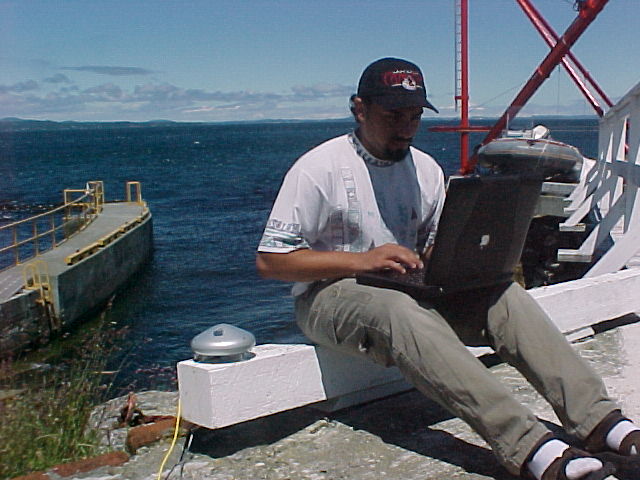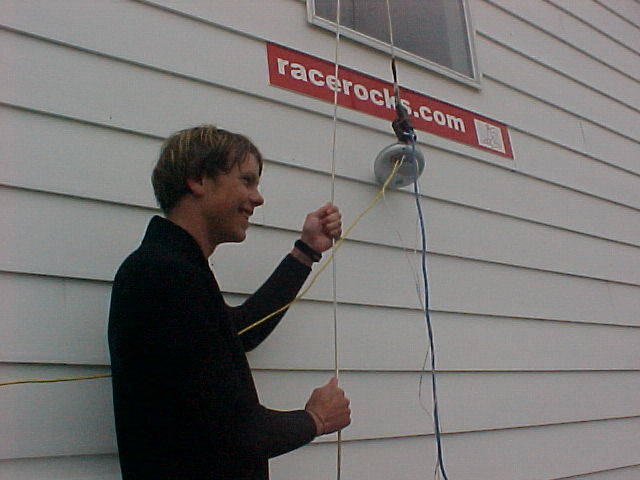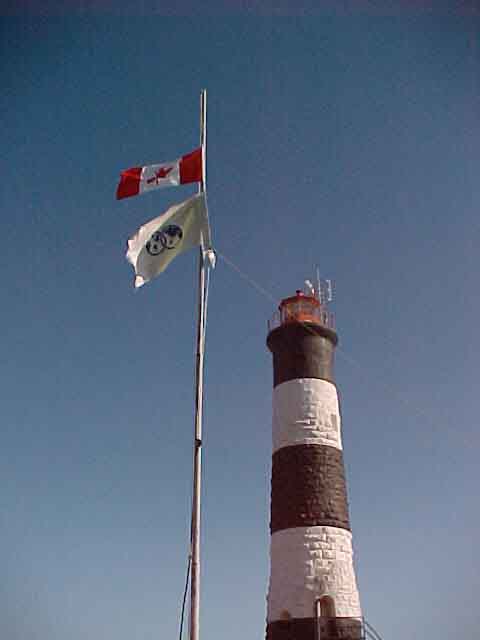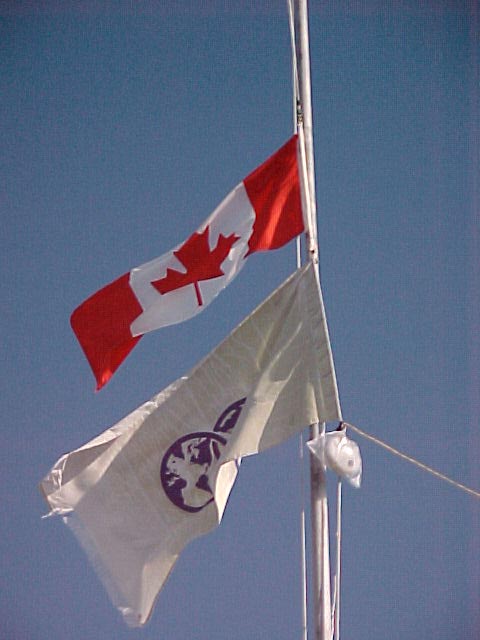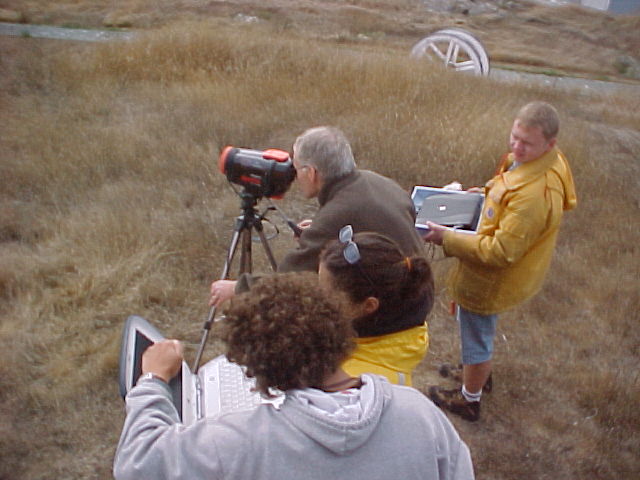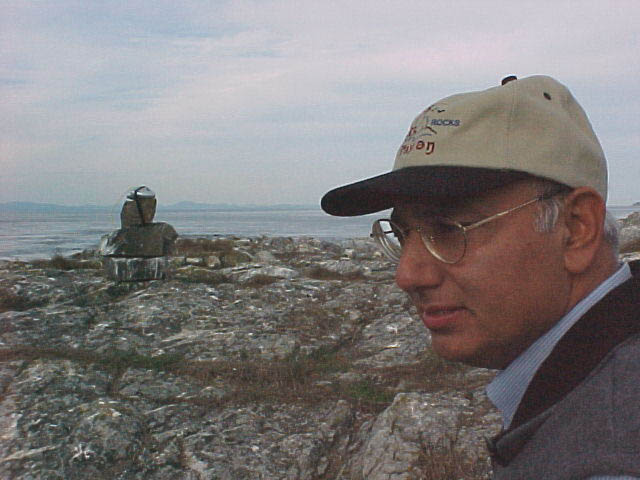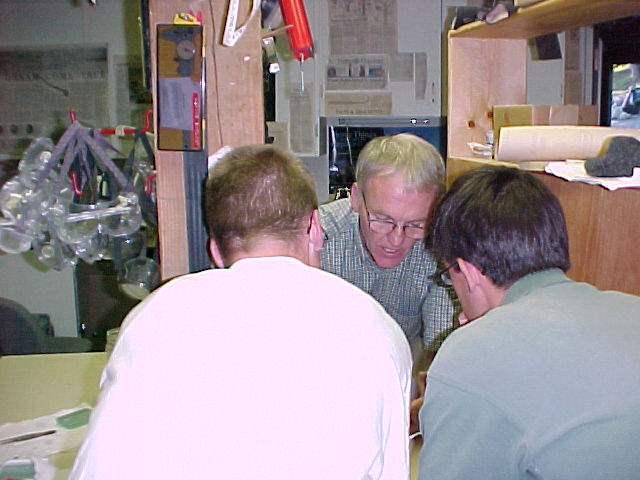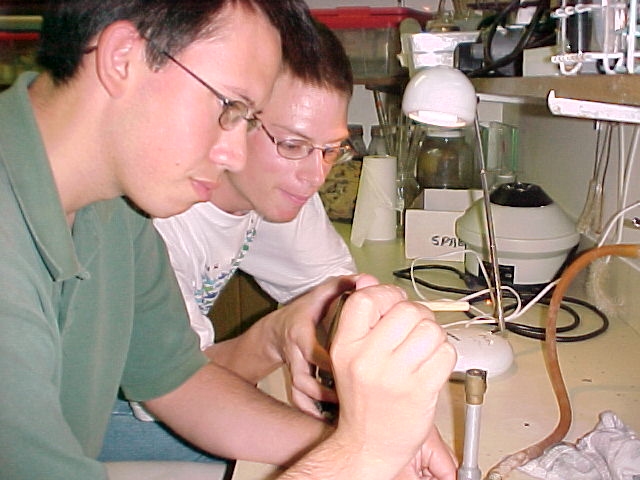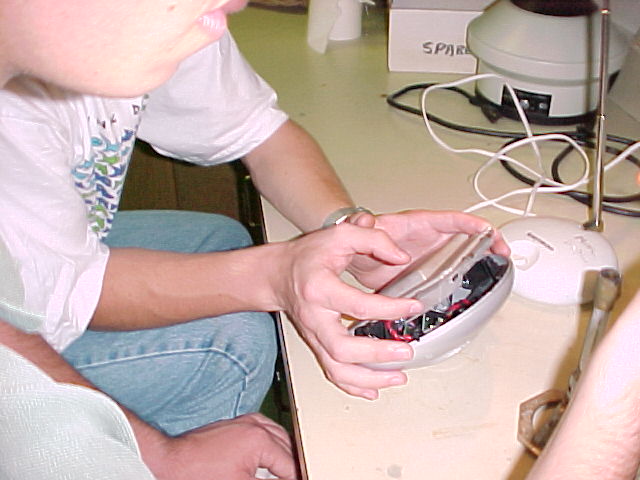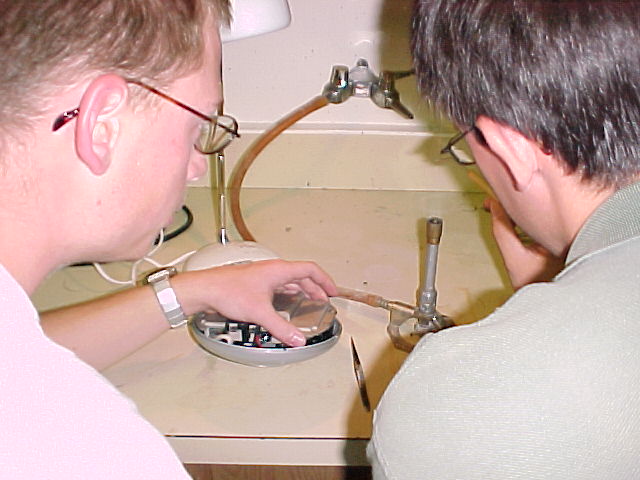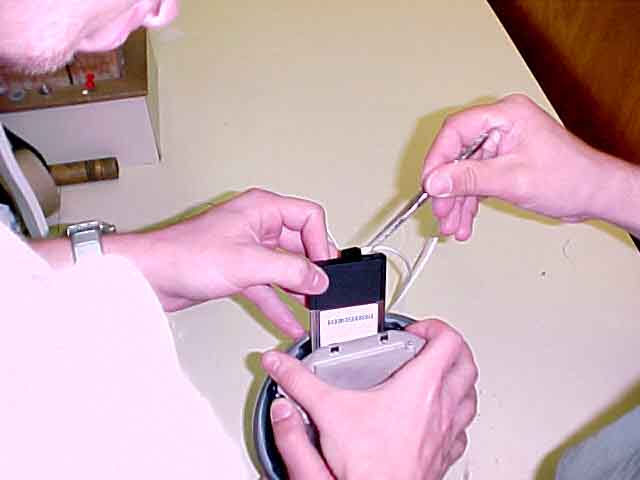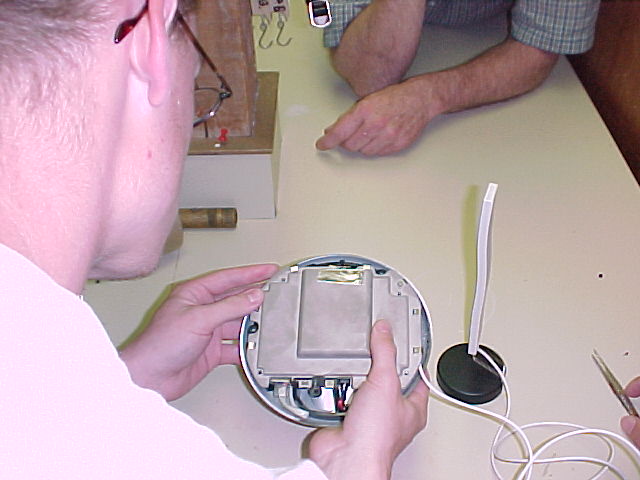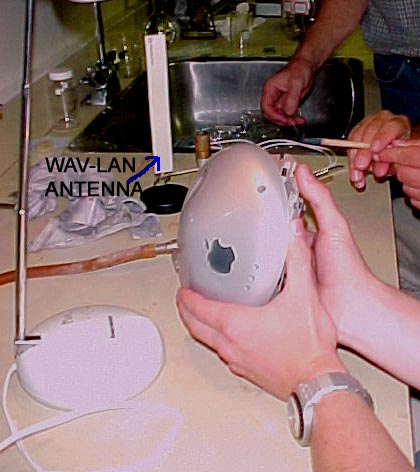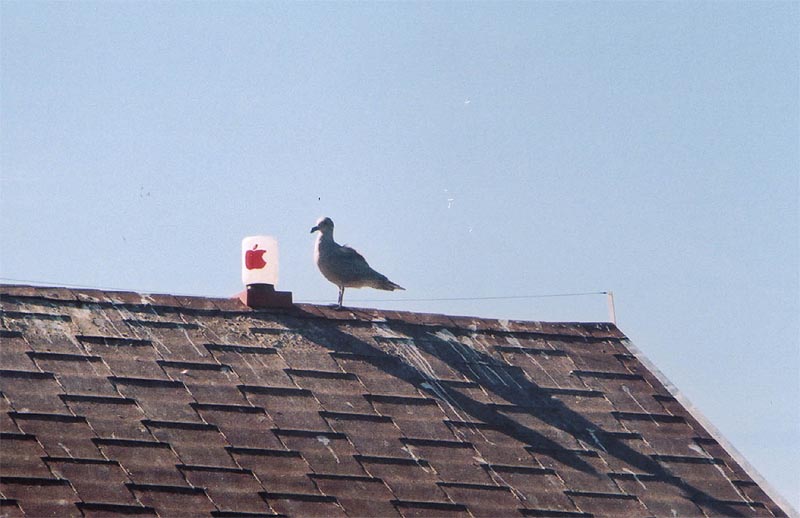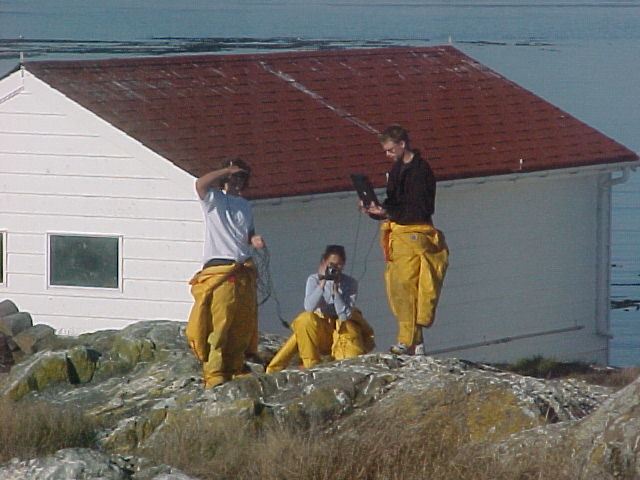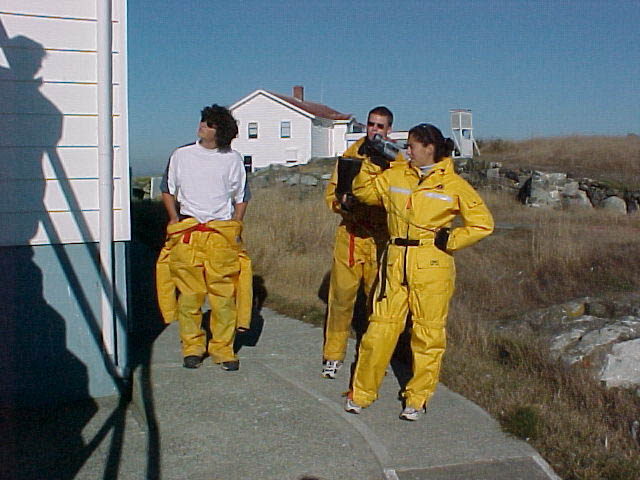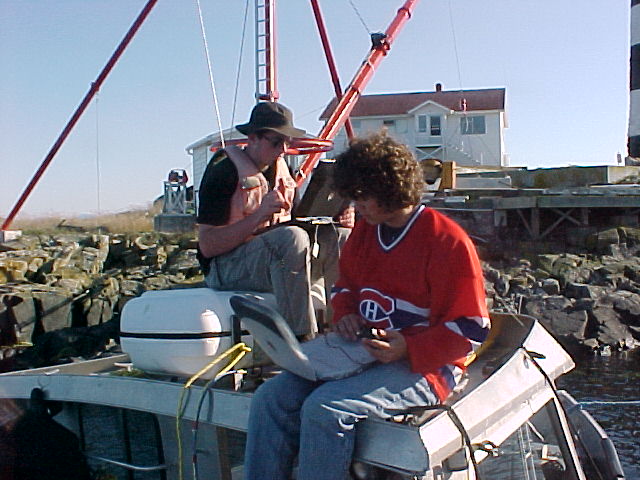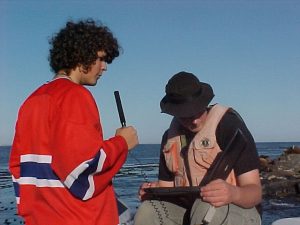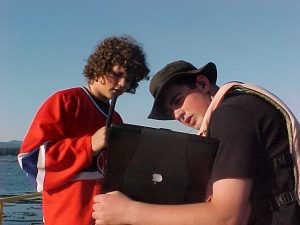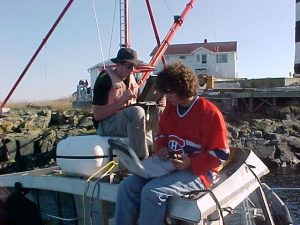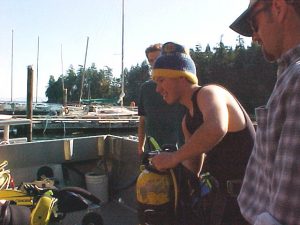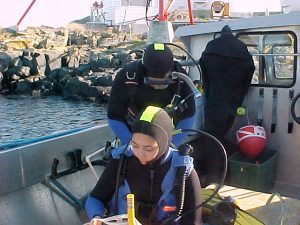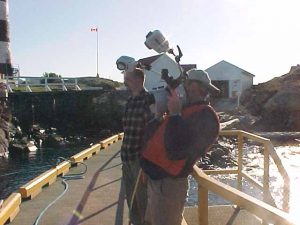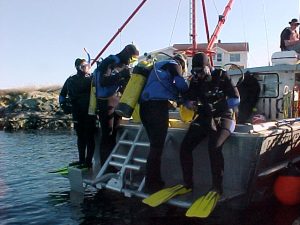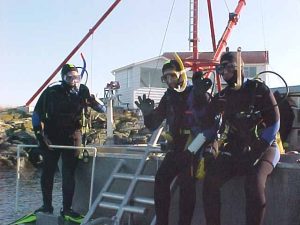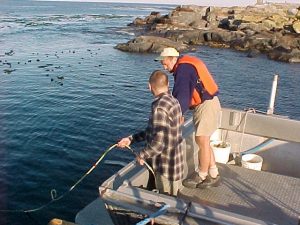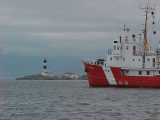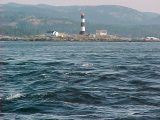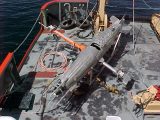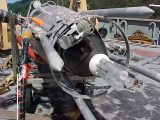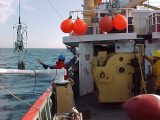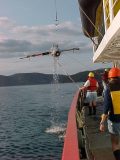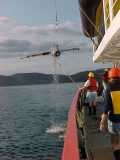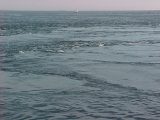In April 2001, The APPLE Learning Interchange supplied an AirPort wireless Base Station and three AirPort cards for the iMacs at Race Rocks. Now all cameras could run on Wireless computers at Race Rocks.
We started experimenting by using the AirPort base station for wireless web casting in June of 2000 . This link shows several pictures of the AirPort in use at that time
- We started experimenting with using the AirPort base station for wireless web casting in June of 2000 . Her David from Egypt is at the controls.
- Victor hoisting an airport to the top of the science building
- This time in order to get a better coverage over more of the island while using the mobile camera and computer, we hoisted the Airport up the flagpole .
- In September when our students came back for orientation week, another series of experimental webcasts were done throughout the week.
- Garry, Michael and Jean undertake to attach a new Lucent Wave-LAN extender antennae to the existing AirPort base Station in order to give greater coverage for mobile webcasting on the island.
- This procedure involved taking the AirPort apart, removing the Lucent PCMCIA card and cutting out some plastic of the supporting case with a hot needle in order to fit the small plug into the antenna.
- An operation which of course voids the warranty, but one that if successful will extend the range of our wireless webcasting to 200 meters. This should adequately cover the whole island, and out to the boat when we are diving offshore.
- A successful operation – and now to take it back out to Race Rocks to install it on the roof of the Marine Science Centre building.
- By early October we had done just that. In an inverted plastic gallon jug with an Apple on one side and a Lucent circle on the other, the new antenna inside now gives exceptional coverage of almost the whole MPA, well beyond the 200 meters recommended.
- A wire runs through the roof of the science centre and connects with the AirPort base station in the Attic. This is plugged into the LAN which leads to the Microwave radio for relay to the internet at Pearson College on Vancouver island.
- Garry couldn’t wait to see what range was possible so a quick trip out with Angus in Hyaku proved it was working. From the location shown above, using netscape on the iBook, the remote camera on the island was focused on the boat. At the same time using the G3 PowerBbook, on the boat, transmission of a webcast of the tower and the island was achieved.
- The following day, the racerocks.com crew came out to test out the reception at different locations on the island.
- Webcasting using Sorenson Broadcaster, reception from the boat out near West Race Rocks was as good as that right next to the marine science centre.
Ryan describing what the divers were videoing underwater during a presentation in the QuickTime Live Conference in California. The webcast was done wireless to the AirPort base station in the marine science centre

